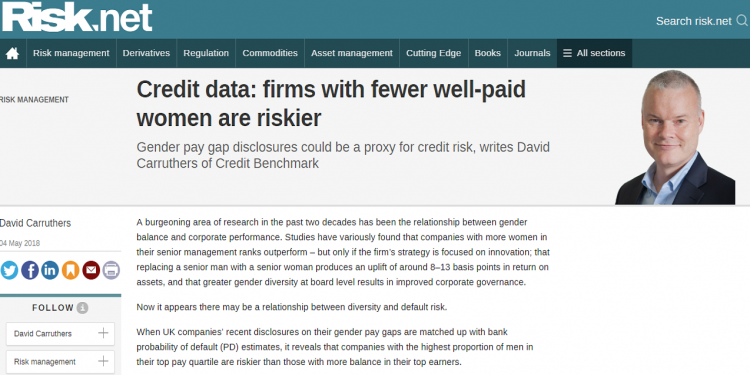
“A burgeoning area of research in the past two decades has been the relationship between gender balance and corporate performance. Studies have variously found that companies with more women in their senior management ranks outperform – but only if the firm’s strategy is focused on innovation; that replacing a senior man with a senior woman produces an uplift of around 8–13 basis points in return on assets, and that greater gender diversity at board level results in improved corporate governance.”
In this series of monthly articles from Risk.net, David Carruthers, head of research at Credit Benchmark, discusses the relationship between gender pay gaps and credit risk in addition to global credit industry trends.
Read the full article here or in the May edition of Risk Magazine.